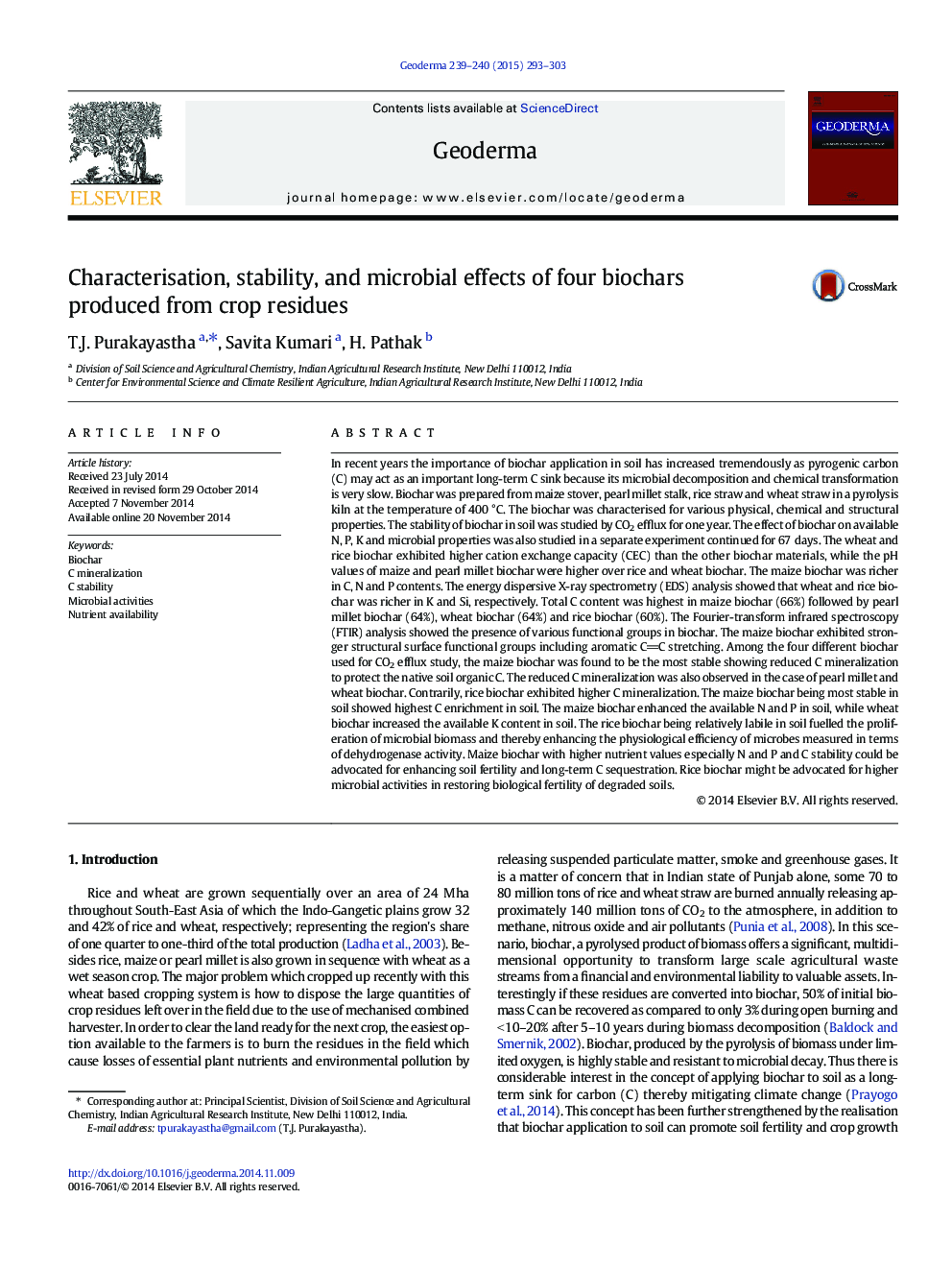| کد مقاله | کد نشریه | سال انتشار | مقاله انگلیسی | نسخه تمام متن |
|---|---|---|---|---|
| 6408683 | 1629466 | 2015 | 11 صفحه PDF | دانلود رایگان |
- Characteristics of kiln produced biochar were strongly influenced by feedstock type.
- The FTIR analysis exhibited stronger structural surface functional groups in maize biochar.
- Maize biochar was most stable showing negative priming effect thus could preserve native soil carbon.
- Rice biochar being relatively labile enhanced microbial activities in soil.
- Wheat biochar with medium stability is a rich source of potassium.
In recent years the importance of biochar application in soil has increased tremendously as pyrogenic carbon (C) may act as an important long-term C sink because its microbial decomposition and chemical transformation is very slow. Biochar was prepared from maize stover, pearl millet stalk, rice straw and wheat straw in a pyrolysis kiln at the temperature of 400 °C. The biochar was characterised for various physical, chemical and structural properties. The stability of biochar in soil was studied by CO2 efflux for one year. The effect of biochar on available N, P, K and microbial properties was also studied in a separate experiment continued for 67 days. The wheat and rice biochar exhibited higher cation exchange capacity (CEC) than the other biochar materials, while the pH values of maize and pearl millet biochar were higher over rice and wheat biochar. The maize biochar was richer in C, N and P contents. The energy dispersive X-ray spectrometry (EDS) analysis showed that wheat and rice biochar was richer in K and Si, respectively. Total C content was highest in maize biochar (66%) followed by pearl millet biochar (64%), wheat biochar (64%) and rice biochar (60%). The Fourier-transform infrared spectroscopy (FTIR) analysis showed the presence of various functional groups in biochar. The maize biochar exhibited stronger structural surface functional groups including aromatic CC stretching. Among the four different biochar used for CO2 efflux study, the maize biochar was found to be the most stable showing reduced C mineralization to protect the native soil organic C. The reduced C mineralization was also observed in the case of pearl millet and wheat biochar. Contrarily, rice biochar exhibited higher C mineralization. The maize biochar being most stable in soil showed highest C enrichment in soil. The maize biochar enhanced the available N and P in soil, while wheat biochar increased the available K content in soil. The rice biochar being relatively labile in soil fuelled the proliferation of microbial biomass and thereby enhancing the physiological efficiency of microbes measured in terms of dehydrogenase activity. Maize biochar with higher nutrient values especially N and P and C stability could be advocated for enhancing soil fertility and long-term C sequestration. Rice biochar might be advocated for higher microbial activities in restoring biological fertility of degraded soils.
Journal: Geoderma - Volumes 239â240, February 2015, Pages 293-303
